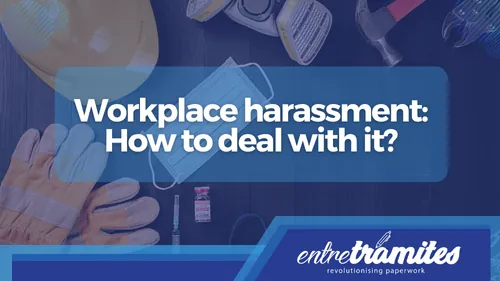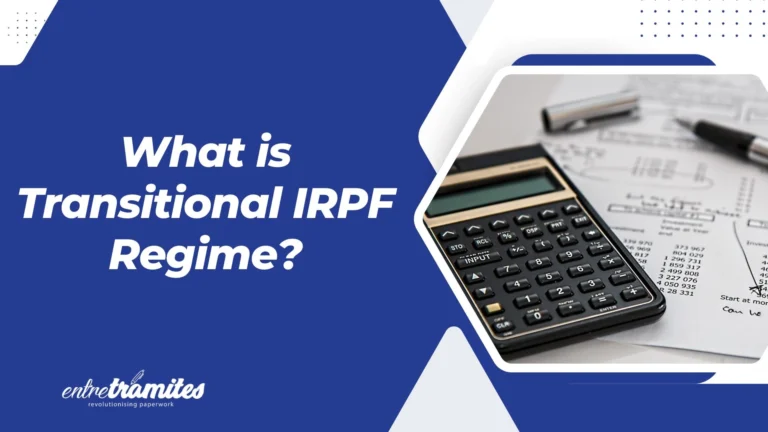Workplace harassment is any practice that continually and repeatedly denigrates or bothers the worker or employer, intending to damage their physical or psychological integrity. It can take various forms, such as verbal attacks, threats, psychological violence, teasing, discrimination, sexual harassment, devaluation, denigration of their roles, and feelings of inferiority.
These actions can cause psychological problems and even depression. If the harassment is constant and does not stop, the affected person will likely come to see themselves as responsible for what happened.
The company must have a protocol for workplace harassment. In addition to being part of the Equality Plan, it is included in the Workers’ Statute (article 4) and in Organic Law 3/2007 (articles 45 and 48).
Workplace harassment protocol
To prevent or stop it, the company must have a workplace harassment protocol. This is a plan that includes the necessary measures to prevent or eliminate this type of situation. Its objective is to eradicate behaviors that affect both workers and employers who suffer from them and to guarantee the physical and psychological well-being of workers.
What should the workplace harassment protocol include?
The protocol against workplace harassment must include reporting mechanisms, sanctions for harassers, the procedure to follow in the event of a harassment situation, and information to all staff about the steps to follow.
Note: This includes the actions to be taken, whether they are witnesses or victims, as well as the steps to follow to file the corresponding complaint.
Create a workplace harassment protocol step-by-step
It is essential to have an anti-harassment protocol at work (as well as mandatory to avoid a sanction). As a first step, you must know whether or not the company has an equality plan. This is the key to everything since there are differences in application, monitoring, review, and evaluation.
Note: The Equality Plan is mandatory for companies with more than 50 workers.
If the company has an equality plan, the negotiation of the workplace harassment protocol will be done through a negotiating commission. If you do not have an equality plan, you will have to negotiate with the workers’ legal representatives or union representatives. In any case, the anti-harassment protocol must follow the guidelines agreed upon in the corresponding collective agreement.
Commission or instructor
The first step, in companies that have an equality plan, is to appoint a training committee of three people. If your company does not have one (because you have less than 50 employees), you will need to appoint an instructor. In companies with more than 50 workers, in addition to the three people who make up the committee, there must be a substitute.
Design internal regulations
In this step, they will have to design and develop internal regulations to prevent and/or stop harassment at work. In addition, a series of preventive measures must be created to avoid workplace harassment. It is advisable to offer anti-bullying awareness training to all staff.
Create an internal reporting channel
To end harassment at work, you must establish an internal reporting channel. This must be completely confidential to avoid harm to the complainant. The action plan must be easily accessible, fast, and effective.
Socialize the plan to the workers
Once the action plan is well structured, it must be communicated to all staff; all workers must know the action protocol. To do this, it must be sent by email, in physical format and published on the company’s website or intranet.
Investigation of workplace harassment that has been reported
To demonstrate the veracity of the facts, you must establish a workplace harassment investigation procedure. As part of this, the evidence must be collected or presented (if any) and witnesses, the victim, and the defendant interviewed. The investigation commission must guarantee the confidentiality of the parties.
Once the complaint is received, the person or the investigation committee will have 2 or 3 business days, respectively, to activate the harassment protocol. After activation, the complaint is evaluated and the parties involved are interviewed. They will have 10 days (in companies with an investigator) or 13 days (in the case of an investigation committee). If necessary, precautionary measures may be taken during the investigation to stop the harassment.
Creation of the report
During the investigation, evidence and testimonies of what happened will be collected. This information will be included in the report along with a conclusion as to whether or not there is evidence of workplace harassment. If there is, the company will be asked to take the appropriate sanctioning measures. You have three business days from receipt of the report from the commission or the person carrying out the investigation.
If the employee is not dismissed, we must ensure that the situation is not repeated. In addition, compliance with the adopted standards must be controlled.
Frequently asked questions about workplace harassment protocol
What is the procedure for appointing the commission or instructing a person?
- The procedure will depend on whether the company has an equality plan or not.
- In companies with more than 50 workers, the investigation committee will be made up of three people plus a substitute. However, in companies with fewer than 50 employees, one person must be designated as an instructor.
- The period for changing members of the investigation commission is four years. However, in the case of a director, there is no maximum or minimum time limit.
- It is recommended that the people in charge of the investigation be members of human resources.
Is it mandatory for companies to have an action protocol against workplace harassment?
It is essential to have a workplace harassment protocol. Regardless of the size of your company, you should have an action plan to deal with these situations. You should keep in mind that you are not only responsible for the harassment that may be inflicted on the employee. If harassment occurs within the company and protocol is not followed, it can lead to sanctions for your company.
What sanction can the company receive if it does not have a workplace harassment protocol?
Not having a workplace harassment protocol can be a criminal offense and can even lead to jail time. If you don’t have it, I recommend that you find out and fix the problem as soon as possible.
The sanctions vary depending on the seriousness of the infraction included in the Law on Infractions and Sanctions.
- Fines of 7,501 to 30,000 euros for minor infractions
- Fines of 30,001 to 120,005 euros for serious violations
- Fines of 120,006 to 225,018 euros for very serious violations
But this can not only mean an administrative penalty for the company. In the event of judicial action, fines imposed by the court would be added, as well as compensation to the victim. In addition, the company could lose any aid or bonuses for 2-6 years, and even the benefits it currently receives may be suspended.
Similarly, a worker could request voluntary leave in the event of harassment and receive compensation equivalent to that of unfair dismissal.
What is and what is not workplace harassment?
This is the question most asked by employers and workers who find themselves in these situations. Workplace harassment is any situation in which the worker or employer is intended to be denigrated. It is important to highlight that for it to be considered workplace harassment it must last over time, as long as it is not physical or sexual harassment.
On the other hand, demanding constant results at work, as long as it is not done through threats or bad manners, is not considered harassment.
In conclusion, the company needs to establish a workplace harassment protocol and monitor the cases that arise to avoid possible sanctions in the future.
Do you need more information about regulations for Spanish companies?
At Entre Trámites we offer various services of management, advice, and support in bureaucratic procedures for self-employed, SMEs, and other types of companies. Contact us! Through our contact form, you can leave your details for us to call you, schedule a free consultation, or simply text our WhatsApp.





